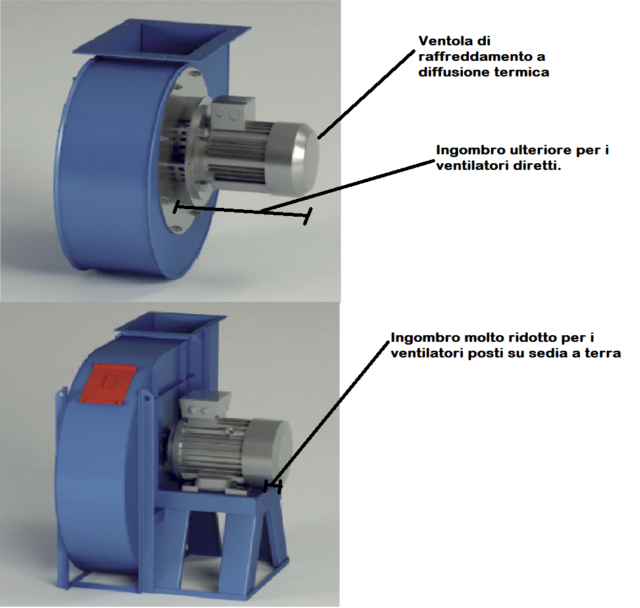What are the difficulties that may arise in the convective transport of hot gases,i.e. at a temperature higher than 60°C?
Fluids with a temperature greater or equal than 60°C can cause various damages to the
structures that transport them.
Although steel alloy technology has made great strides, especially in the development of heat-resistant alloys, hot fluids can still cause thermal expansion and this expansion often causes irreversible deformations in the structures that carry them.
In addition to technical damages, these deformations can give rise to real accidents due to the leakage of gases, with consequent damages to environment and people.
It is therefore extremely necessary to provide to the cooling of these gases,and even to their ventilation..
Technology for ventilating hot gases
Meridiana aspiratori studied a technology which manages how to cool and, simultaneously, ventilate gases at temperatures higher than 60°C.

As shown in the figure, this technology consists of a metallic heat diffuser mounted on the
fan hub. The diffuser has a small fan that allows the hot gases to pass through it.
Exactly as occurs in common computers, but in a more extended way, the contact of the
gases with the heat diffuser cools the hot gases that can be put back into the convective circle forced by the fan. dal ventilatore.
As simple as it is useful, this technology represents an optimal solution to avoid structural thermal deformation phenomena.
Although the high temperature gases circulate for a short distance in the fan, the contact with the heat diffuser cools these gases very quickly,
avoiding anomalous deformations,
Same as it happens in computers.
In a nutshell, our idea was precisely to apply a technology already widespread in the electronic field to successfully integrate the structures of our fans, making them effective in the forced convective transport of gases at temperatures higher than 60°C..

